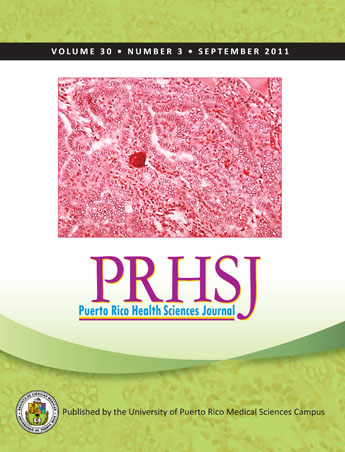Abstract
Objective: Diabetic retinopathy (DR), the most common diabetes-related eye disorder, is associated with poor glucose control and is the most frequent cause of adult-onset blindness. The purpose of this study was to demonstrate that pharmacists can play an effective role in identifying individuals at risk for developing DR, educating them about DR, facilitating access to diagnostic eye exams, and referring patients diagnosed with vision problems or other conditions for treatment and continuing care. Methods: This two-phase project was conducted at two independent community pharmacies in Puerto Rico. Phase I consisted of open educational sessions at each pharmacy to create citizen awareness of DR, while on the phase II screening days, an ophthalmologist conducted eye examinations of pharmacy customers in order to diagnose possible vision problems. For those participants diagnosed with vision problems, the results of their exams were sent to their preferred ophthalmologist. Results: Seventy-two patients who participated in phase I at the two community pharmacies were selected to receive ophthalmologist exams in phase II. The mean age of these participants was 58 years, and 76% were female. Sixteen of the patients (22%) evaluated in phase II were diagnosed with diabetic retinopathy and were referred to their preferred ophthalmologist or primary care physician for follow-up evaluations and treatment. Fourteen patients (19%) were diagnosed with glaucoma. Four of these glaucoma patients were among the 16 patients who were diagnosed with DR. Conclusion: The community pharmacy is an excellent venue in Puerto Rico where citizens can be educated and informed about the problems of DR and examined medically to identify those with undiagnosed diabetic retinopathy or, if such is the case, other vision problems. Once diagnosed, these patients can be promptly referred to their preferred ophthalmologists for treatment and follow-up care.
Authors who publish with this journal agree to the following terms:
a. Authors retain copyright and grant the journal right of first publication with the work simultaneously licensed under a Creative Commons Attribution License that allows others to share the work with an acknowledgement of the work's authorship and initial publication in this journal.
b. Authors are able to enter into separate, additional contractual arrangements for the non-exclusive distribution of the journal's published version of the work (e.g., post it to an institutional repository or publish it in a book), with an acknowledgement of its initial publication in this journal.
c. Authors are permitted and encouraged to post their work online (e.g., in institutional repositories or on their website) prior to and during the submission process, as it can lead to productive exchanges, as well as earlier and greater citation of published work (See The Effect of Open Access).
